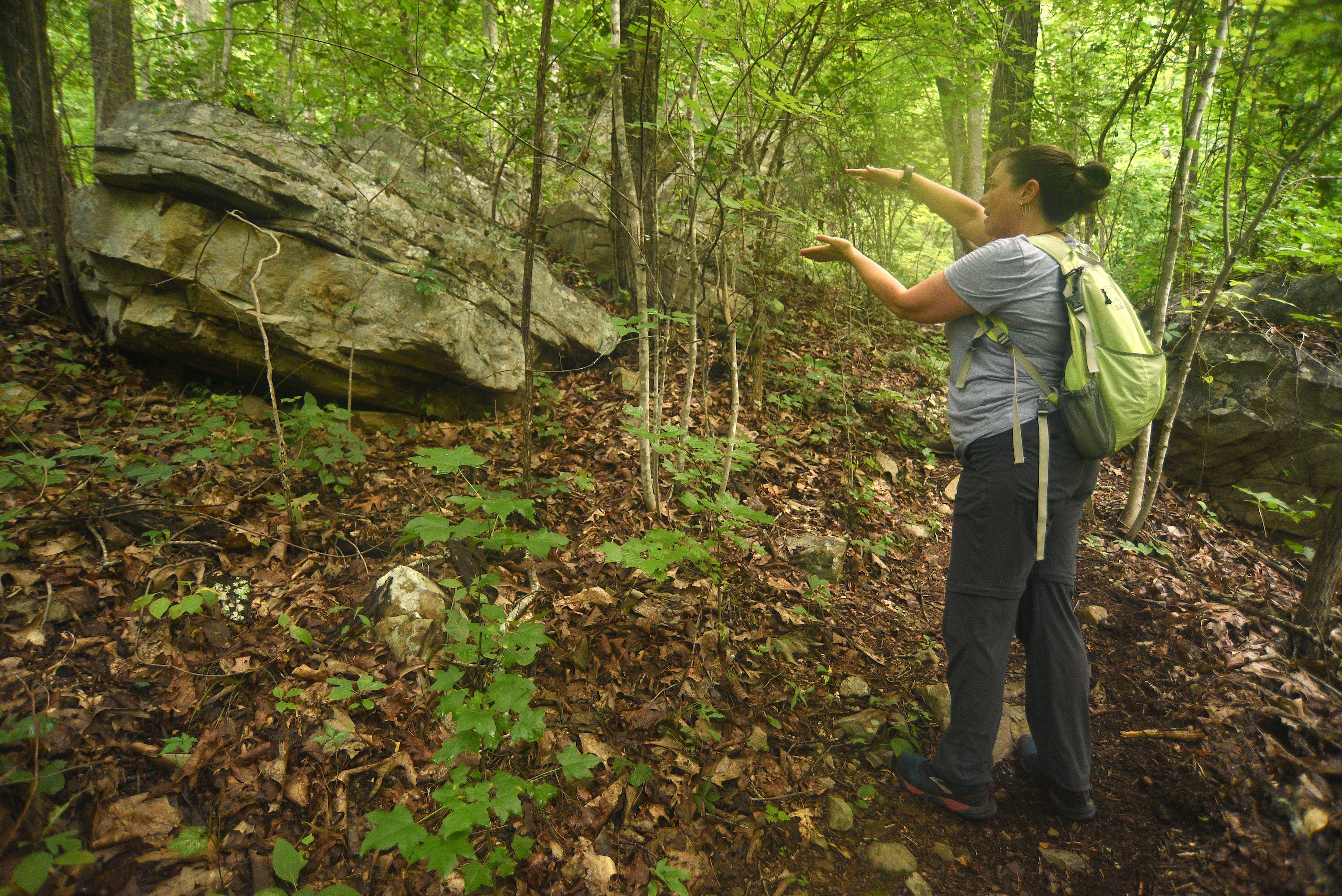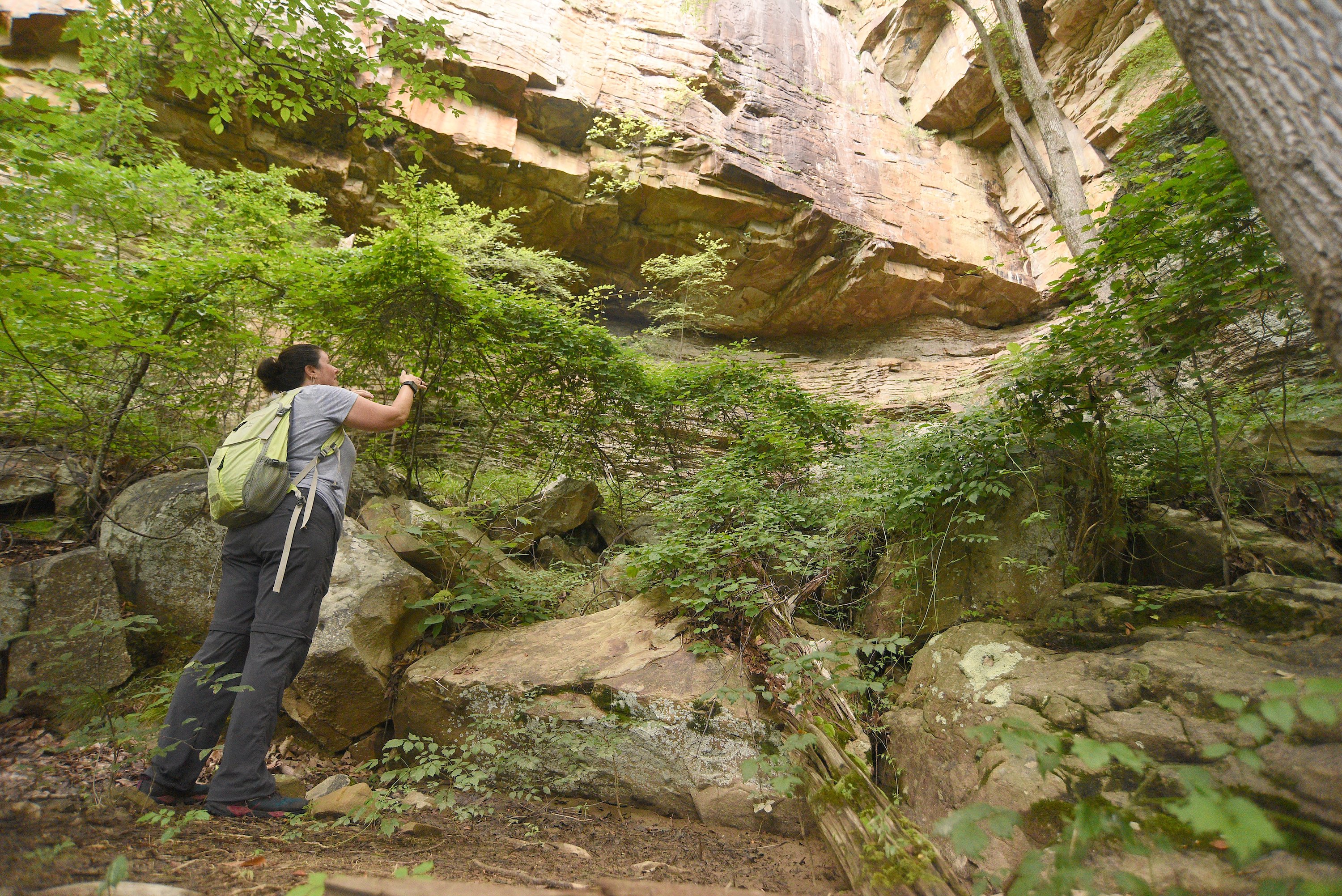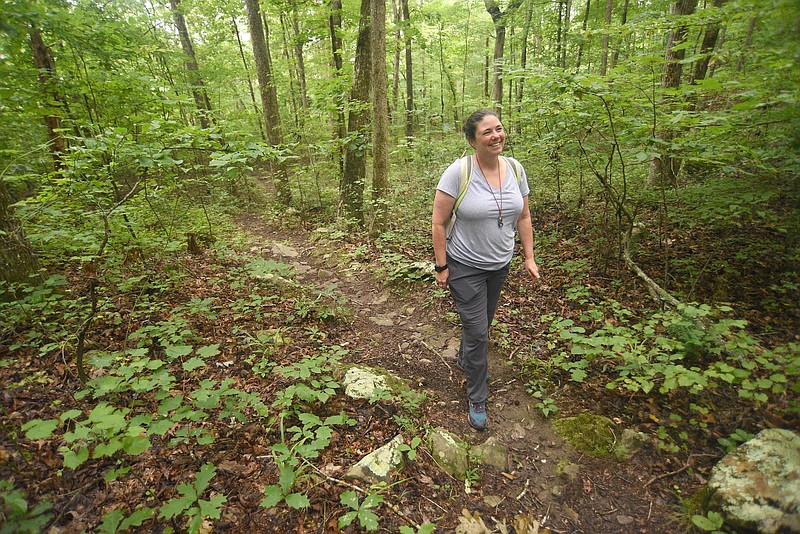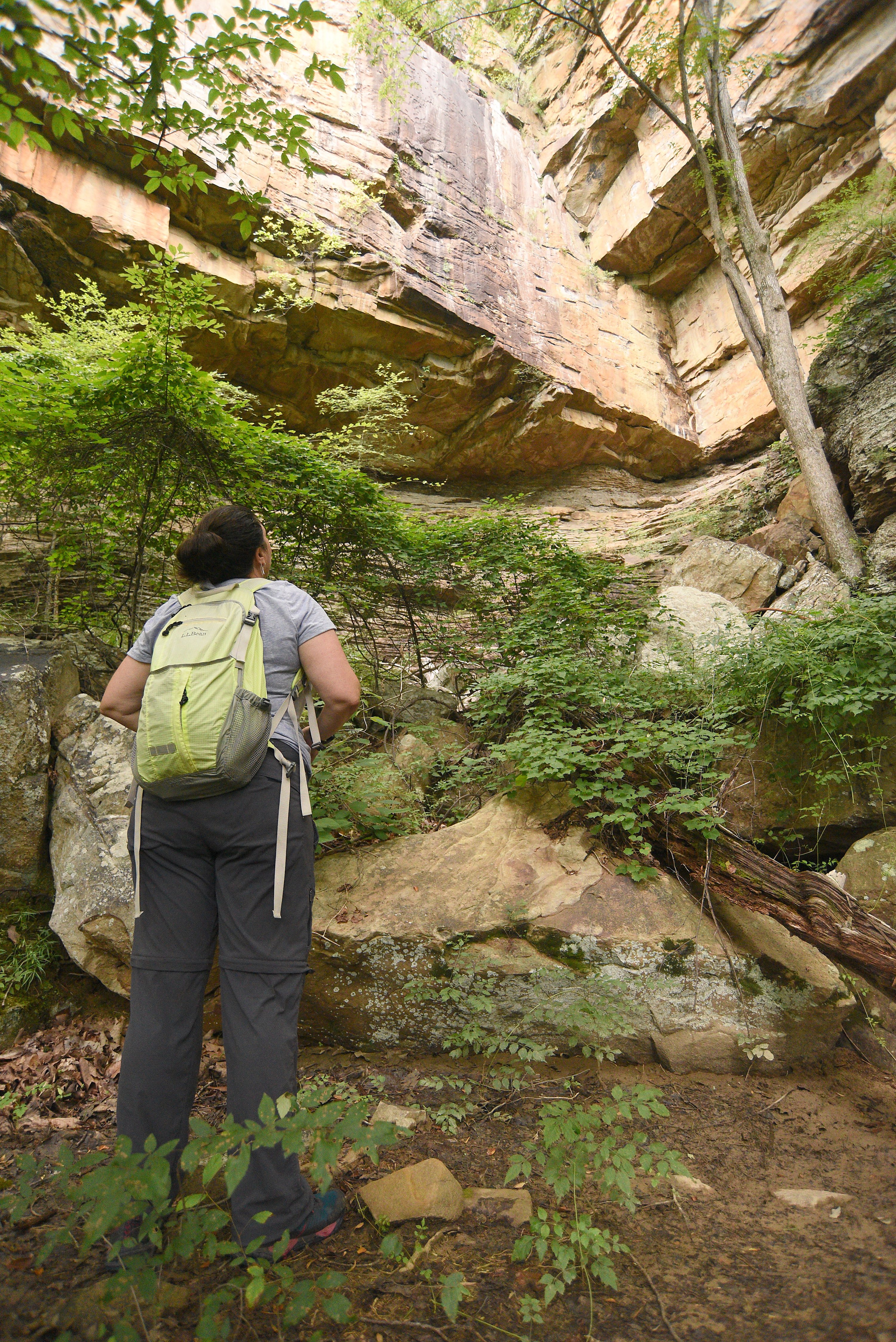Early one recent morning, the Chattanooga geologist Amy Brock-Hon and two companions approached the trail leading to the Tennessee Wall.
Known for its "trad" climbing routes (where pre-drilled bolts are scarce and climbers must install their own temporary protection equipment as they ascend), the sandstone cliff looming over the Tennessee River Gorge has helped make Chattanooga's rock-climbing reputation. But its story runs much deeper.
It can't be told without the river. How exactly the Tennessee River established its present route remains a point of academic dispute. But there is little doubt about at least one thing the river does: It carves, down, down, down. It draws in dirt. It exposes prehistoric rock, long buried.
As the crew left their cars behind, a fellow hiker asked Brock-Hon about the river. She said that subject should come last; geologists, she said, go from old to new.
An associate department head at the University of Tennessee at Chattanooga, Brock-Hon paddleboards and hikes and doesn't fear heights. But she doesn't rock climb. Her ascent to the T-Wall was driven by something else: curiosity. Ever since the young Oklahoman roamed her PaPa's rock garden, she wanted to figure out how things worked. She quotes the mineralogist Linus Pauling: "Satisfaction of one's curiosity is one of the greatest sources of happiness in life." Geology is the world, Brock-Hon said. "It's everything that allows us to live."
Water quality? Largely a geological matter. Shelter? Everything we build with comes from the earth. Food originates with plants, but those aren't growing without soil and nutrients — and those come from rocks. "That's why we're here," Brock-Hon said.
 Staff photo by Matt Hamilton/ Amy Brock-Hon talks about geology while hiking a trail in the Prentice-Cooper Wildlife Management Area.
Staff photo by Matt Hamilton/ Amy Brock-Hon talks about geology while hiking a trail in the Prentice-Cooper Wildlife Management Area.
She attended graduate school in Las Vegas. Western landscapes express relatively recent earthquakes, catastrophic volcanic eruptions — products of the tectonic plates rumbling below. Today, under Southern California, plates slide past one another. Farther north, they are still smashing together.
In 2010, Brock-Hon and her geophysicist husband moved to Chattanooga, where this kind of tectonic churn took place something like 300 million years ago. The land was underwater. But it was rising as North America and Africa drew closer — the beginnings of the super-continent Pangea.
Shells and minerals from the water deposited on the ocean floor. The material compacted, hardening under pressure, forming layer after layer of limestone. The land kept rising. The ocean got shallower, quieter, and still smaller particles settled, forming a brittler sedimentary rock: shale.
And in the deltas right around sea level, sand piled atop sand.
As Brock-Hon and company reached the midway point of the hike, these rocks from this distant era were mostly nowhere to be seen. Shale breaks down easily. And whereas in some parts of the country, limestone walls stand prominently, here the material largely forms the low ground — the valleys under the rivers. This is in part because plants — less abundant in the arid regions of the West — leech carbon dioxide into the water, rendering it more acidic, dissolving the limestone away.
What was visible was the hardier sandstone wall above and the rocks that have broken from it and rolled downhill.
The trail wrapped around a massive sandstone boulder, marooned between trees and teetering, tall-side-up, three humans high. Brock-Hon stooped to admire it.
 Staff photo by Matt Hamilton/ Amy Brock-Hon talks about the Tennessee Wall in the Prentice-Cooper Wildlife Management Area.
Staff photo by Matt Hamilton/ Amy Brock-Hon talks about the Tennessee Wall in the Prentice-Cooper Wildlife Management Area.
There were other small wonders. Farther along, a fallen tree blocked the trail. "I don't know why, but I really love bioturbation," Brock-Hon said, pointing to the exposed root ball in which large, upturned rocks were embedded. Soon she found quartz in conglomerate rock, smoothed over by prehistoric water, and a fossil from bark once buried in a sandstone deposit.
Finally, she reached the base of the T-Wall.
In some sections, the huge cliff stood atop thinner, shale-ier rock. This foundation had in many places been hollowed out, however, leaving the sandstone mass protruding out above.
Brock-Hon sketched out its likely future. The river will continue to cut and erode the land. More rock, long buried, will be freed to stretch upward, outward. But its days are numbered. The tree roots growing above will find and bust into the rock's weak points. The wall will form joints and cracks, inviting not just to rock climbers, but also to water.
The damaging freeze-thaw cycle will commence. Sediment will blow off in the wind. One chunk of rock, then another, will break off and tumble down the valley. Once in the river, the detritus might catch behind a dam. "In a few thousand years, the dam will be gone," Brock-Hon said, laughing.
The residue might continue on, deposit in a Louisiana delta. More residue might pile on top, pressing down harder and harder. And someday, some great force may bring the resulting rock up — birthing an entirely new landscape.
Brock-Hon recalled that huge sandstone boulder abutting the trail farther down. Maybe, she said, humans, hiking along, will erode that trail just a bit more. Maybe the ground will give way, and that teetering rock will roll, one length closer to the river.
"It's on its way," she said.

